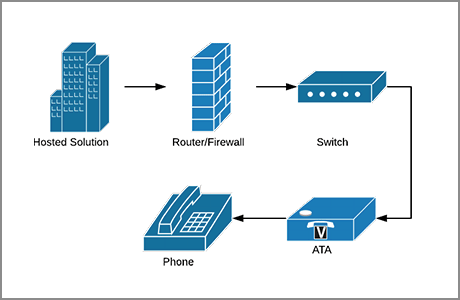When to use a Gateway or an ATA
This guide is used to help the user decide whether to use a Gateway or ATA.
Introduction
Gateways and ATAs may look similar, but they serve two different functions. If you have an existing PBX that does not directly support a SIP trunk, you will want to use a gateway to connect with us. If you already have an existing domain and a few analog devices you still need to support, then you would be looking at deploying an ATA for those devices.
Gateway
A Gateway allows you to connect your legacy PBX with an SIP Trunk. You will need a gateway that uses FXS (Foreign Exchange Subscriber) ports to connect. Your legacy PBX would then connect to the Gateway, which would be set up with a SIP trunk connection that communicates with us.
This method will allow you to keep your current infrastructure, user extensions, IVR setup, etc. and take advantage of the benefits we offer with a SIP connection.

ATA
An analog telephone adaptor, or ATA, is typically used for single devices that need to connect with us. It is most common for residential users who wish to keep their existing phones.
ATAs will use an FXS port and require an ethernet connection to connect with the domain. The domain will need to be set up with a user and an available extension to assign the ATA to. 